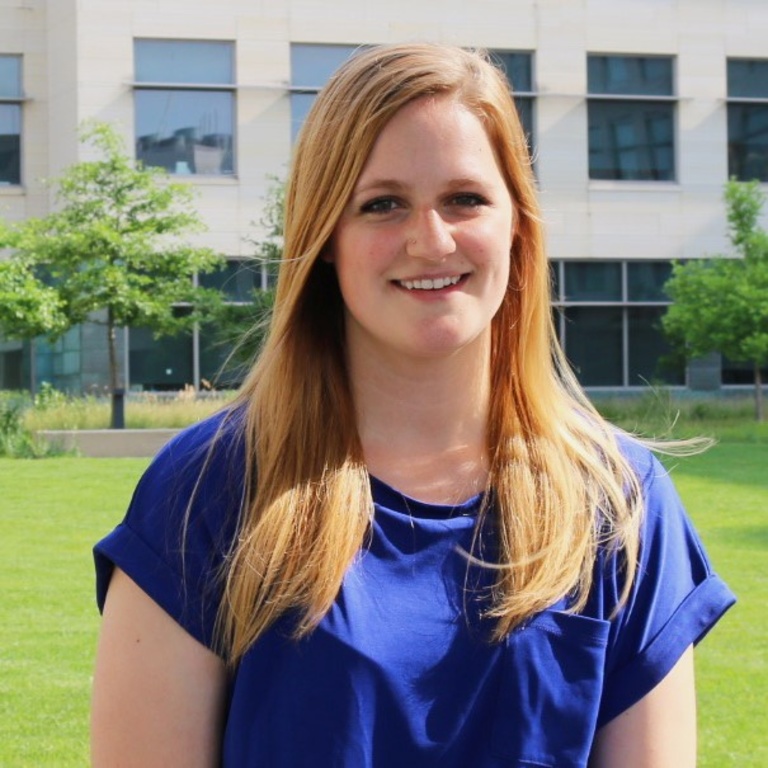Laura Pietrok (Stephens)
During chronic viral infections, a continuous presence of antigen results in repeated engagement of the T cell receptor. This prolonged stimulation drives T cells into a state of dysfunction termed exhaustion. Exhausted T cells are characterized by a loss of effector functions including IL-2 and IFN-g production, as well as decreased proliferative capacity, and reduced cytotoxicity. Additionally, exhausted T cells upregulate and sustain cell surface of multiple inhibitory receptors and possess an altered transcription factor profile. To study chronic viral infections, 2 strains of lymphocytic choriomeningitis virus (LCMV) are used, Clone-13 which models a chronic infection and Armstrong which models an acute infection. T cell exhaustion has been extensively studied in CD8 T cells using LCMV in a C57BL/6 inbred mouse model. While this remains a useful immunological tool, an inbred model possesses limitations including the inability to capture the genetic variability found in the human population.
My work focuses on studying T cell exhaustion using the collaborative cross mouse model. This is a panel of recombinant inbred mouse strains derived from genetically diverse founder strains. It is used to generate a model encompassing wide genetic diversity for the analysis of complex traits. By looking at phenotypic markers of exhausted cells including inhibitory receptors and various effector functions, I will explore the genetic factors that influence the development of persistent viral infections.
Bibliography
Stephens LM, Ross KA, Waldstein KA, Legge KL, McLellan JS, Narasimhan B, Varga SM. Prefusion F-Based Polyanhydride Nanovaccine Induces Both Humoral and Cell-Mediated Immunity Resulting in Long-Lasting Protection against Respiratory Syncytial Virus. J Immunol. 2021 May 1;206(9):2122-2134. doi: 10.4049/jimmunol.2100018. Epub 2021 Apr 7. PMID: 33827894; PMCID: PMC8062305.
Stephens LM, Varga SM. Nanoparticle vaccines against respiratory syncytial virus. Future Virol. 2020 Nov;15(11):763-778. doi: 10.2217/fvl-2020-0174. Epub 2020 Nov 30. PMID: 33343684; PMCID: PMC7737143.
Soto JA, Stephens LM, Waldstein KA, Canedo-Marroquín G, Varga SM, Kalergis AM. Current Insights in the Development of Efficacious Vaccines Against RSV. Front Immunol. 2020 Jul 17;11:1507. doi: 10.3389/fimmu.2020.01507. PMID: 32765520; PMCID: PMC7379152.
Boyden AW, Brate AA, Stephens LM, Karandikar NJ. Immune Autoregulatory CD8 T Cells Require IFN-γ Responsiveness to Optimally Suppress Central Nervous System Autoimmunity. J Immunol. 2020 Jul 15;205(2):359-368. doi: 10.4049/jimmunol.2000211. Epub 2020 Jun 12. PMID: 32532836; PMCID: PMC7343581.
Stephens LM, Varga SM. Function and Modulation of Type I Interferons during Respiratory Syncytial Virus Infection. Vaccines (Basel). 2020;8(2):E177. doi:10.3390/vaccines8020177
Stephens LM, Ross KA, Waldstein KA, Legge KL, McLellan JS, Narasimhan B, Varga SM. Prefusion F-Based Polyanhydride Nanovaccine Induces Both Humoral and Cell-Mediated Immunity Resulting in Long-Lasting Protection against Respiratory Syncytial Virus. J Immunol. 2021 May 1;206(9):2122-2134. doi: 10.4049/jimmunol.2100018. Epub 2021 Apr 7. PMID: 33827894; PMCID: PMC8062305.
Honors & Awards
- NIAID T32 Predoctoral Training Grant AI007485 2018-2019
- Trainee Abstract Award, AAI Annual Meeting 2019, 2020
- Free Radical Radiation Biology T32 Recipient AY 2020 - 21
- 2021 AAI Young Investigator Award
